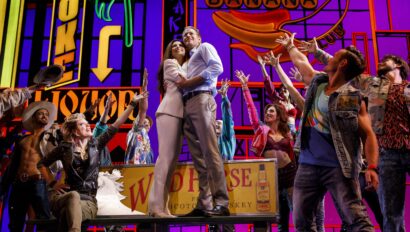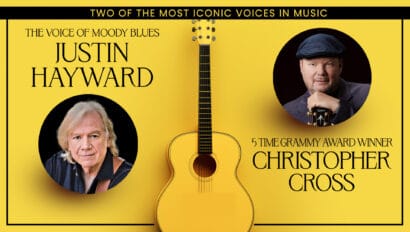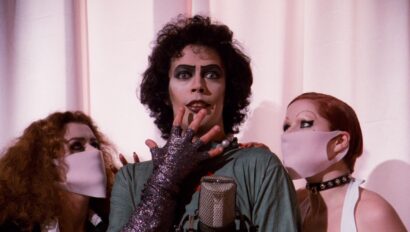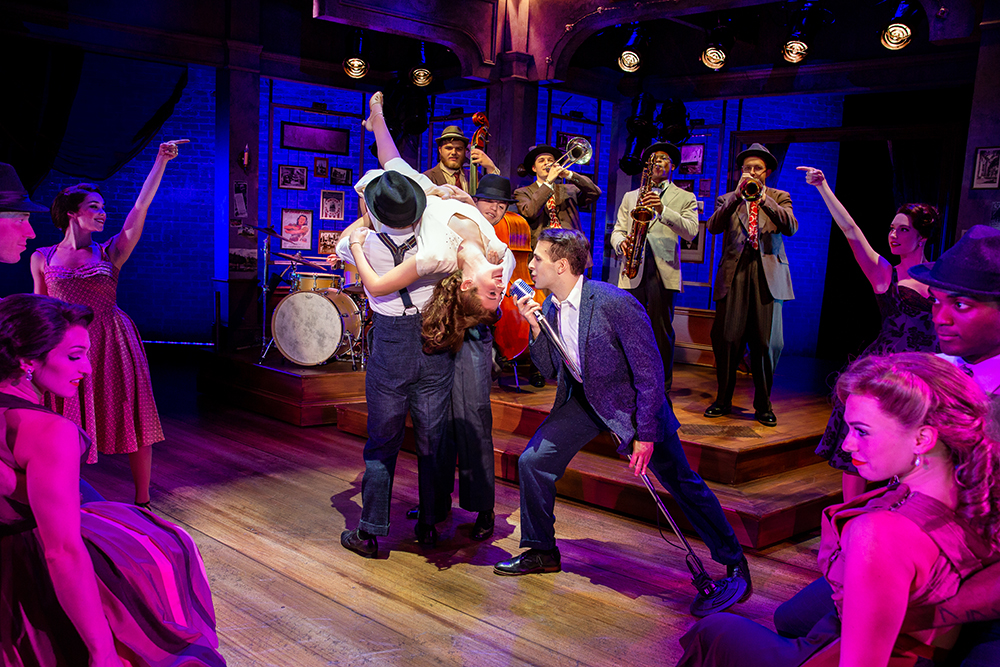
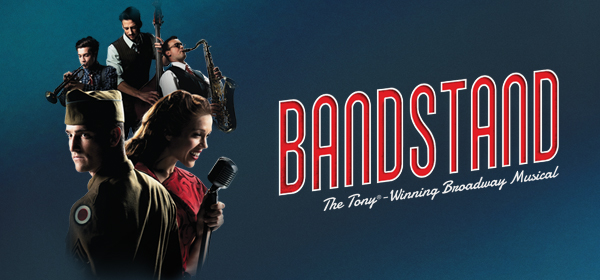
From three-time Tony® winner and “Hamilton” choreographer, Andy Blankenbuehler, comes a poignant and inspiring new American musical that explodes with infectious music and high-octane, heart-stopping dancing. Read on for a discussion with Blankenbuehler about Bandstand before the national tour visits our stage Thursday, March 19 – Sunday, March 22.
Let’s just start at the very beginning. How did you become involved in the project? And what was it about the subject matter that appealed to you?
Blankenbuehler: It’s actually a great sort of circle story. I grew up with a kid named Dave Kreppel. We did theater together and from first grade through high school went to school together. He and I attended a summer theater camp the mid-1980’s and we met Richard Oberacker. He was in the same summer camp and was a year ahead of us in school in Cincinnati. So, we all met there as teenagers and all stayed in touch over the years. I did a couple of shows where Dave was in the orchestra pit or Richard Oberacker was playing the piano in the orchestra pit. So, our paths sort of crossed. I was doing a new musical in Dallas about six or seven years ago and got a call from David. He said, “Richard and I would love to talk to you about this piece.” And so, they pitched me what became Bandstand.
I had been looking for a piece to do about World War II. I’m really passionate about the 1940’s and passionate about that generation of Americans and all the sacrifices made because of war. And, also, I love the fashion.
I love the sense of work, integrity and the American spirit. And, of course, I love the music and the dance that came with it.
So, I was really excited about it. We did the normal sort of process that you do. You work on the script with the team, then you get a music stand reading together. Our first music stand reading was amazing. It was Faith Prince, Laura Osnes, Jeremy Jordan, Josh Henry and a great cast. It was so much fun and the piece had so far to go, but it still had bones of something that was really exciting.
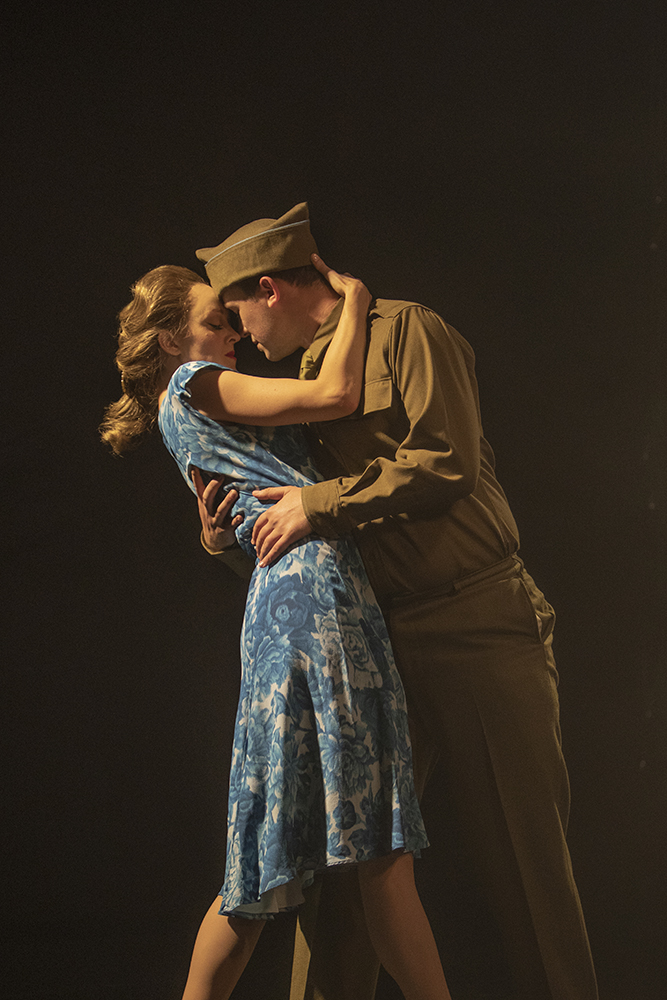
What was interesting is Richard and Rob wanted to create our mom and dad’s golden age musical. They wanted to make it an homage to the musicals that we grew up with, the MGM movie musicals. But, at the same time, everybody wanted to make a contemporary musical. We did two or three readings and then we did the show at the Paper Mill Playhouse. We were doing it as a traditional musical and, so, we took these huge clippers to the piece and started gutting it, making it more contemporary. With a contemporary audience, you have to challenge them to stay with you. The movement became more impressionistic, with how I use the soldiers in the show, and the memories and the ghosts of their fallen friends. It’s all done in an impressionistic way that forces the audience to take in different types of storytelling, all at the same time.
There aren’t a lot of pieces of art, or film that have dealt with the post-traumatic stress of the Greatest Generation. In creating this story with the guys, how much did you talk to vets? Did you talk to people about PTSD?
Blankenbuehler: Rich and Rob really had that in mind. They really wanted to tell an honest story. The other thing that appealed to me about the piece is that usually period pieces are done in a pastiche way. I love the idea that this could feel like swing music, feel like authentic music and tell a real story. That way you did not have to suspend your disbelief. This wanted to be a dramatic piece, but have the robustness of a musical.
But, for me, I found the story about art healing the soul the way in. So, for these men and these women, yes, they were dealing with these deep, deep, deep wounds. But the story that I want to tell is there is a way out.
In our lives today, if we’re really stressed about work or if we really feel like we’ve hit a dead end in life, there are ways forward. There are therapeutic things that make our hearts and our souls turn to fire, and they lead us forward. That’s the story that I wanted to tell.
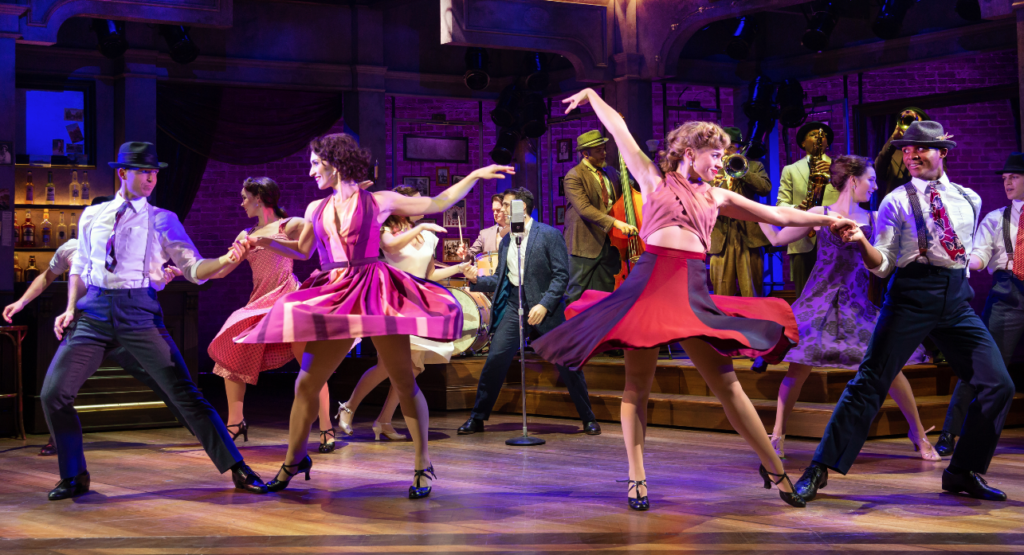
So, let’s talk about the dance. Swing dancing is a very distinct genre, but you use it in very different ways. You certainly tip your hat to it, even as you play with it.
Blankenbuehler: In musicals, what I love is when the movement really is from a time and place. In Bandstand, if you’re in a jazz club and they’re playing swing music, I want to do authentic swing movement. But I don’t want to do that all night long. What I want to be able to do is take a dance form and a music form that you can touch on in a pure way and then take it out of context and break it. Not every social dance and music does that. I don’t think you can do that to disco, but I do think you can do that to swing music and swing movement. And so that’s what we do.

We have a few numbers in the show where it’s legit swing dancing. Swing is not very different from its African roots in tap dance, in drumming, which then went to hip hop. People have done swing dancing for years and years, and they’re passionate about it, and they’re really good at it. I am just sort of an overseer of it, but then I need help. And so, for Bandstand we brought in an amazing group of swing dancers, Mark Stuart Eckstein, Jamie Verazin and Marc Heitzman They know the ins and outs, they know the handholds that have been done for 60 years, the foot patterns and the rhythm patterns.
I want to go back to this idea of turning things into slow motion, because I remember kind of a “whoa” moment when I was sitting in the audience, and these guys were slowly going across the stage sort of carrying the ghosts of their dead buddies on their backs. It works on a metaphoric level, but obviously it physicalizes so much of what’s going on inside the characters’ heads.
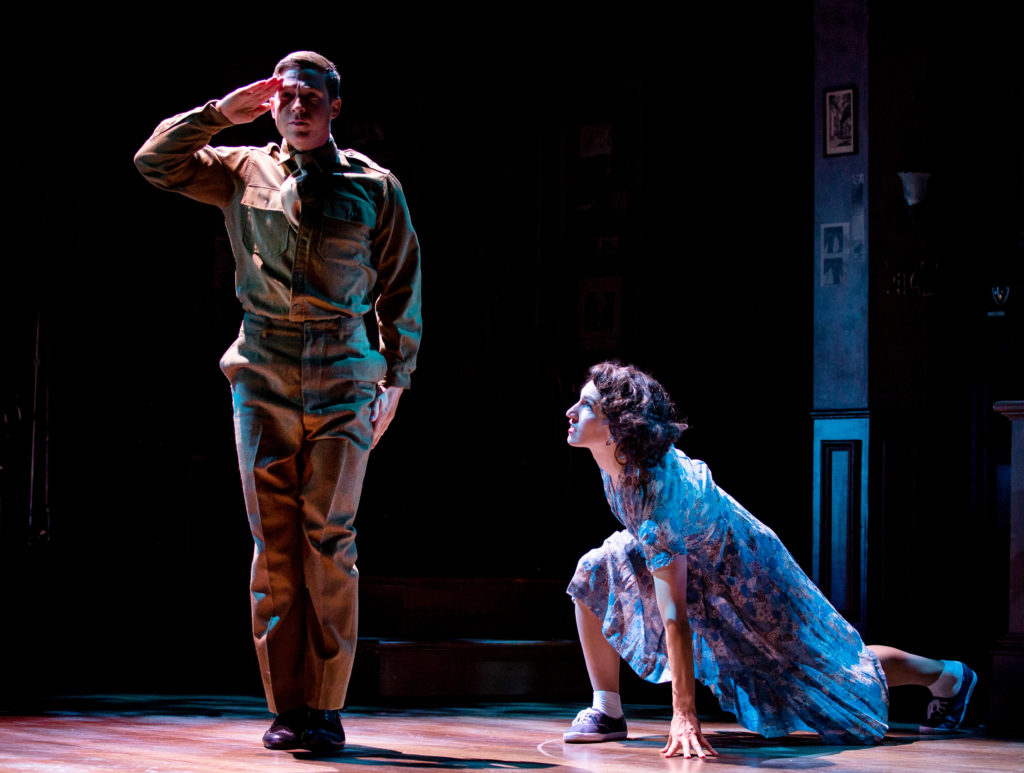
Blankenbuehler: The physicality really does a lot of storytelling in the show and in an exciting way. What I have been realizing in the past 15 years is that resolution at the end of a musical or the end of a musical number can only happen if the conflict leading up to it was really honest. So, you have to feel tension in movement or in song structure so that when the chorus busts open, you feel a release.
That moment of saying when you can move forward in life and proactively make something that you know touches people… it sets people free.
And it’s a generosity that makes a difference to people’s lives. When people see that transition, with the men pushing the piano and Donny finding his melody, a beautiful moment. And choreographically, it could not be simpler. There’s no dance in it. They push a piano and then they run. But it shows that sometimes the step is never important. What’s important is the idea behind it.
PURCHASE TICKETS TO BANDSTAND
Photos by Jeremy Daniel and Michael Pool.
